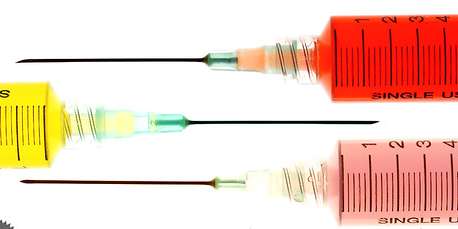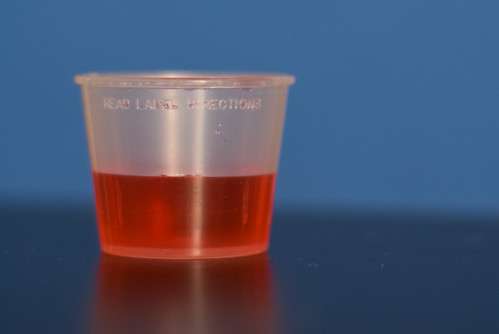
Spectral analysis of liquid pharmaceuticals can play a critical role in ensuring product safety, enhancing consumer perception, and establishing brand identity. Image Source: Flickr user agressti vanessa
My medicine cabinet is a virtual rainbow of colors left over from my desperate battle with the flu last winter. There’s the green of nighttime cold medicine and red for the daytime version. There’s a purple one I tried when the red one didn’t work and a clear one I tried when my flu proved too powerful for the purple. Next to those are packets of glowing liquid capsules, purchased by my husband when, in my fevered state, I could not remember the name of the medication I wanted and told him to “just get the orange ones.”
The Significance of Color
The color of liquid pharmaceuticals can be vital to their use, acting as an identifying marker, enhancing user perception, and allowing for appropriate medication administration. Some medications are pigmented according to potency or suggested use, allowing easy visual distinction between formulations and subliminally affecting patient expectations. As Color Matters points out, “Patients respond best when color corresponds with the intended results of the medication. For example, calm blue for a good night’s sleep and dynamic red for speedy relief.”1 Color can be used to correspond with the flavor additives designed to enhance palatability and appeal, particularly in medications designed for children.2 Other liquid pharmaceuticals depend on clarity and the absence of colorants to allow them to be mixed into edibles or beverages without altering the appearance of the food or drink or to indicate purity of injectables. The significant utilitarian and psychological role of color in medications demands sophisticated monitoring to ensure consistent and accurate batch-to-batch coloration and formulation. Spectophotometry offers an ideal, easy-to-use solution to the challenges of color measurement in liquid pharmaceuticals, safety, patient persistence, and marketability.

Red color can be used to enhance the perception of cherry-flavored liquid medications, increasing appeal and tolerability. Image Source: Flickr user whiskeyandtears


